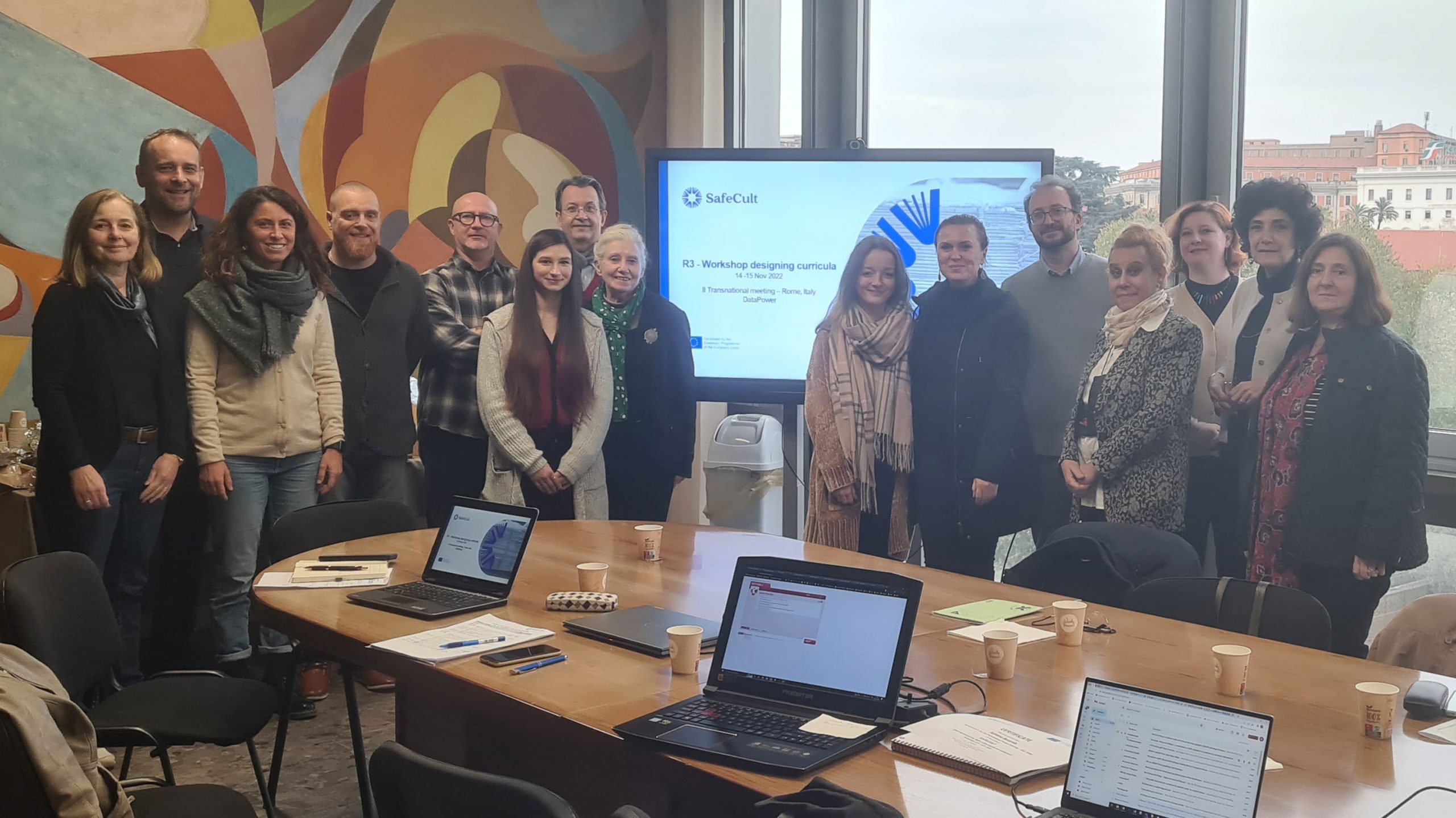
Finally, on 22-23 14th – 15th November the SAFECULT partners met in person for the first time from the beginning of the project! The 3rd Transnational meeting was hosted by the Central National Library of Rome. It was a fundamental opportunity to focus on past activities and develop further ones. In particular, the consortium focused its activity on Result 3 “Disaster Risk Management for Written Cultural Heritage. Key study based on current knowledge, skills, and approaches” organizing 2 days of workshops.

During the first day, the consortium was committed to brainstorming based on the previous interviews addressed to 4 project stakeholders per country (archive, library, conservator, etc. with experience in past emergency events). The interviews’ output was an essential input for supporting the consortium to define the skills, knowledge, and competencies needed to face an emergency. It was possible to collect a representative sample of answers, which underlined one time more as efficient preventive and operational measures before the emergency event are the first and most important step of emergency management and how there is a need to implement training in the field of risk management in cultural heritage. Importantly, communication with stakeholders will play a key role in the implementation of the remaining stages of the project and will be essential for the development of quality materials for the production of training modules. Concerning this, SafeCult gives the opportunity to its stakeholder to join its network to take part in the stakeholder consultation phase and support the project by expressing their opinion. This is possible to sign the SafeCult MOI – Manifestation of interest by our website at: https://safecult.eu/join-us/.

The second day of the meeting was devoted to a workshop aimed at developing the SafeCult skill cards for three defined positions engaged in disaster risk management. The partners were divided into mixed working groups to identify: the target groups usually involved in emergencies: managers of cultural institutions (archives, libraries, museums), written cultural heritage professionals (archivist, librarian, restorer, conservator), and volunteers; learning outcomes and training needs. At the end of the meeting, the consortium developed 3 skill cards identifying 3 curricula addressed respectively to each of the previously identified target group categories.
Very soon we will come back with more details on the SAFECULT curricula, stay tuned!
If you were forwarded this newsletter, subscribe here to receive the next one directly!

